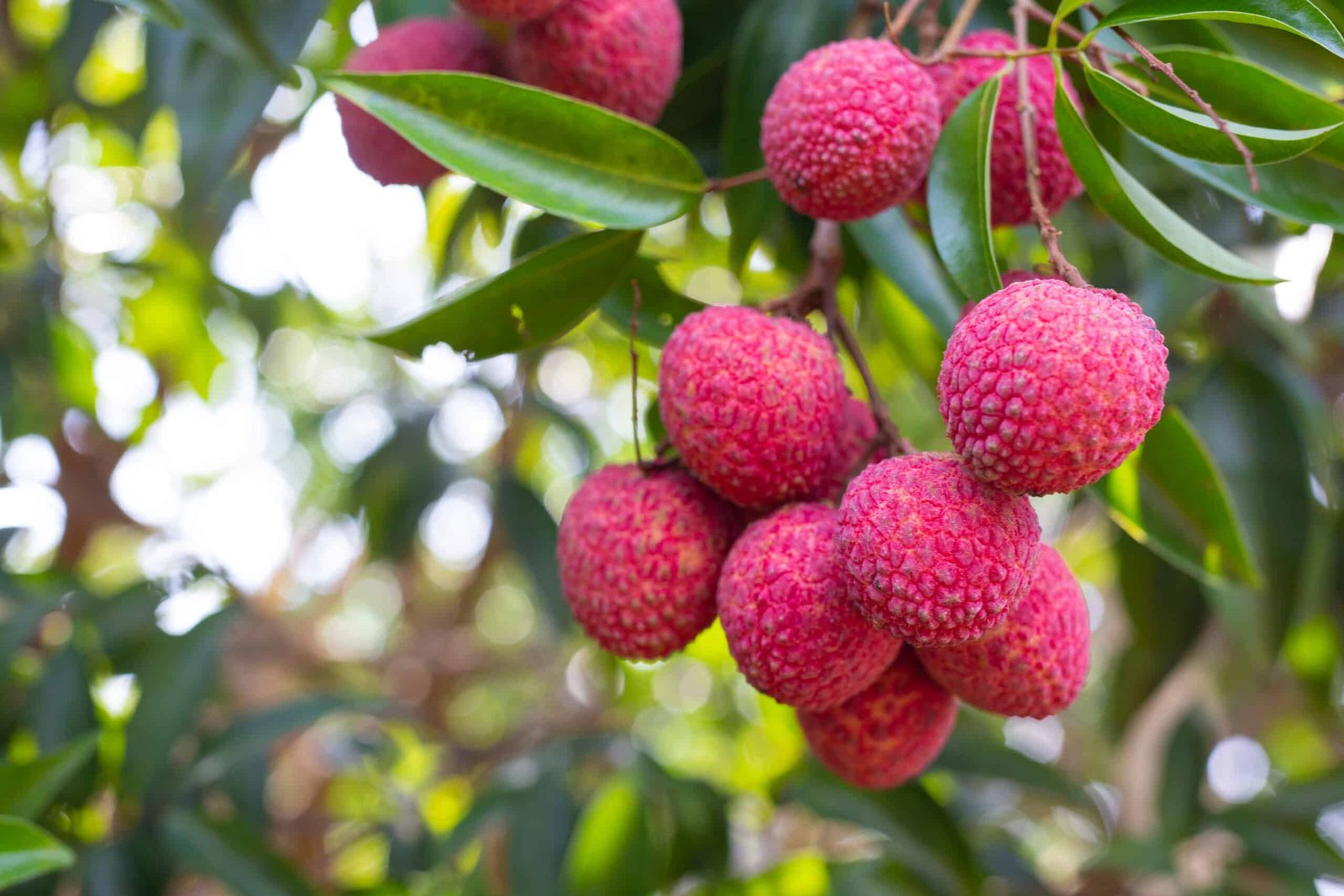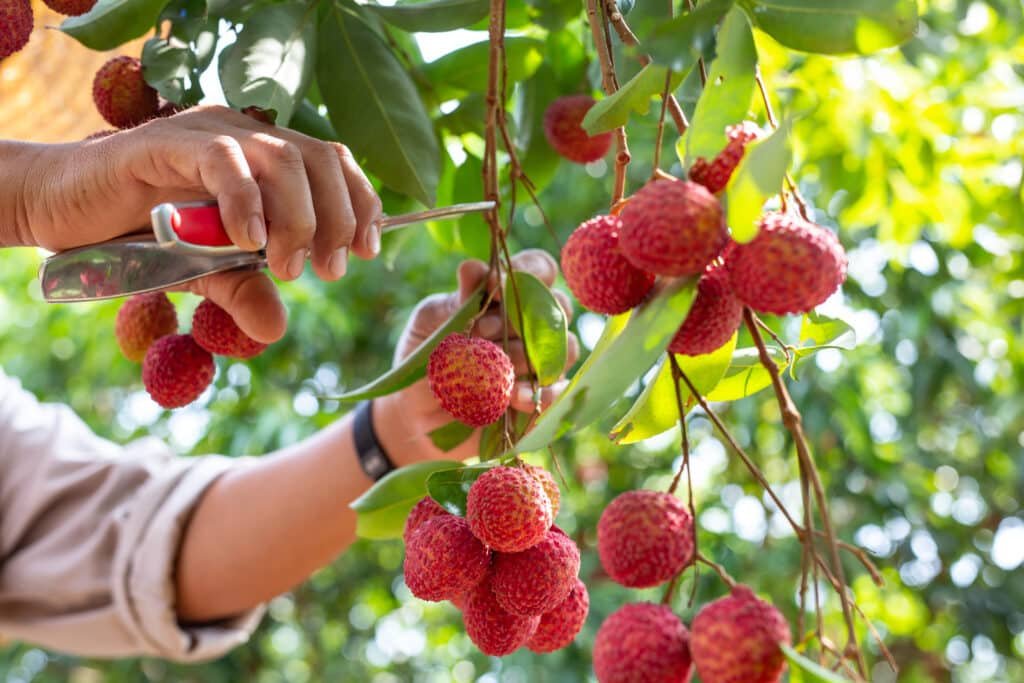Latest News
Litchi Cultivation in India | A Lucrative Summer Fruit Farming Opportunity

Litchi Cultivation, often called lychee, is a tasty tropical fruit that is highly valued for its sweet flavour, juicy flesh, and high market value. Particularly in regions like Bihar, West Bengal, Jharkhand, Uttar Pradesh, and Assam that provide the ideal environment for its production, litchi farming is becoming more and more popular in India. Indian farmers may find litchi cultivation to be a lucrative endeavour due to the growing demand for the product in both home and foreign markets.
Everything from harvesting, pest management, and profitability in litchi cultivation to temperature and soil needs is covered in this article.

🌿 Climate and Soil Requirements for Litchi Cultivation
Litchi is a sub-tropical evergreen tree and grows best in regions with:
-
Temperature: 21°C to 38°C
-
Rainfall: 1,500 mm to 2,000 mm annually
-
Altitude: Up to 800 meters above sea level
-
Soil: Deep, well-drained loamy soil rich in organic matter (pH 5.5–7.5)
-
Avoidance: Waterlogging and strong hot winds during flowering
🌱 Popular Litchi Varieties in India
Several litchi cultivars are grown based on regional adaptation:
-
Shahi: Early maturing variety from Bihar, sweet and juicy
-
China: Large fruits, late ripening, good shelf life
-
Rose Scented: Fragrant and ideal for fresh consumption
-
Bombai: Suitable for eastern states, soft texture
-
Bedana: Seedless variety, premium pricing
Bihar is the largest producer, accounting for over 40% of India’s litchi production, especially known for the GI-tagged Shahi Litchi.
🌾 Land Preparation and Planting
-
Pit size: 1m x 1m x 1m
-
Pit spacing: 8m x 8m or 10m x 10m (depending on variety)
-
Filling: Compost, FYM (Farm Yard Manure), topsoil, and neem cake
-
Planting time: Best in June–July or February–March with irrigation support
Grafting and air layering are commonly used propagation methods.
💧 Irrigation and Nutrient Management
-
Frequency: Every 10–15 days during dry months
-
Critical stages: Flowering, fruit set, and fruit development
-
Organic inputs: Vermicompost, cow dung, biofertilizers (Azotobacter, PSB)
Balanced nutrition includes NPK, boron, zinc, and calcium sprays for fruit retention and size improvement.
🐛 Pest and Disease Management
Common pests and diseases include:
-
Litchi mite: Causes leaf curl, managed with sulfur sprays
-
Fruit borer: Controlled using pheromone traps and neem-based sprays
-
Anthracnose and leaf spot: Controlled with copper oxychloride or Trichoderma
https://www.epa.gov/safepestcontrol/integrated-pest-management-ipm-principlesIntegrated Pest Management (IPM) is recommended to reduce chemical dependency.
🍇 Flowering, Fruiting, and Harvesting
-
Flowering season: February–March
-
Fruit development: April to June
-
Harvesting: Manual harvesting using secateurs when fruits are bright red and slightly soft
Yield starts from 4–5 years after planting and increases annually.
-
Average yield: 80–100 kg/tree
-
Commercial orchards: 8–10 tonnes/ha (at maturity)
📦 Post-Harvest and Marketing
Litchi is a highly perishable fruit with a shelf life of 2–3 days without cold storage. Post-harvest practices include:
-
Grading and sorting by size and color
-
Pre-cooling at 5°C
-
Packaging in ventilated cartons
-
Transport in cold chain systems
Litchi fetches premium prices in urban markets and also has export potential to the Middle East, Europe, and Southeast Asia.
💰 Profitability in Litchi Cultivation
Initial investment is high due to land preparation, saplings, and irrigation setup, but returns start from the 4th year onward. A well-maintained orchard can yield:
-
Net profit: ₹2–4 lakh per hectare per year
-
Lifecycle: 30–35 years of productive life
-
ROI: Very high after initial gestation period
Intercropping with turmeric, pulses, or papaya in early years can add income.
📢 Government Support and Subsidies
Farmers can avail benefits under:
-
MIDH (Mission for Integrated Development of Horticulture)
-
State Horticulture Departments offer subsidies on saplings, irrigation, and organic inputs.
Conclusion
Litchi cultivation offers excellent opportunities for farmers in suitable agro-climatic regions of India. With high demand, government support, and profitable yields, this sweet summer fruit is becoming a strong horticultural asset. Farmers who invest in quality planting material, proper orchard management, and market linkages can earn sustainable income from litchi farming for decades. As consumer preference shifts toward exotic, healthy fruits, litchi farming is poised for significant growth in the coming years.
🤔 Frequently Asked Questions (FAQs)
Q1. How long does it take for a litchi tree to bear fruit?
A: Around 4–5 years from planting, depending on the variety and care.
Q2. Which state is the largest producer of litchi in India?
A: Bihar, followed by West Bengal, Jharkhand, and Uttar Pradesh.
Q3. Is litchi farming profitable?
A: Yes. With proper management and market access, farmers can earn ₹2–4 lakh per hectare annually after the trees mature.
Q4. Can litchi be grown organically?
A: Yes. Organic litchi farming is growing in popularity and earns premium prices, especially for export.
Q5. What are the major export markets for Indian litchi?
A: UAE, UK, Germany, Bangladesh, and Canada.




















